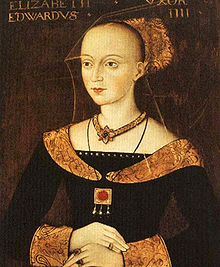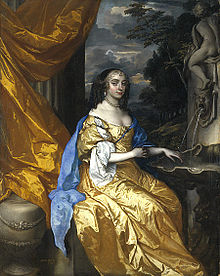
The Royal Family and Wedding Party on the Balcony of Buckingham Palace on the Duke and Duchess of Cambridge’s wedding day, April 29, 2011. Pippa Middleton is standing at the far right, in front of Prince Philip, Duke of Edinburgh.
Last month, TIME magazine declared Philippa Charlotte “Pippa” Middleton, to be one of the hundred most influential people in the world. Miss Middleton appears in the magazine alongside her sister, the Duchess of Cambridge.
TIME has been criticized for including Prince William’s sister-in-law on a list that includes Barack Obama and Hillary Clinton, particularly after the recent incident in Paris where one of Pippa’s friends allegedly waved a gun at a photographer following their convertible. TIME’s Europe editor, Catherine Mayer defended Pippa’s inclusion on the list, stating in the magazine, “The Middletons have become avatars of aspiration. Other women aim to dress like them, to emulate their easy athleticism and their more problematic slenderness.” According to Mayer, the Middleton sisters are therefore influential because of the image they represent instead of their actions.

The Congress of Vienna in 1814-1815, which ended the Napoleonic Wars and the use of dynastic marriage as a policy to determine the borders between kingdoms.
In previous centuries, the inhabitants of England and Scotland would not have disputed that any close relative of a direct heir to the throne was one of the most influential people in the British Isles. Dynastic marriages between royal houses were formal instruments of foreign policy until the Congress of Vienna in 1814-1815, and royalty continued to predominantly marry other royalty until the First World War. These unions were thought to create special ties of influence between European kingdoms. When a royal heir chose a bride from a comparatively unknown family within his own kingdom, popular opinion assumed that her relatives were in search of wealth and political influence above their station and her sisters therefore became targets of popular scrutiny.
So who were the Pippa Middletons of previous centuries?
The last “middle class” woman to marry a direct heir to the English and Scottish thrones, was Anne Hyde, the daughter of politician and historian, Sir Edward Hyde (made of Earl of Clarendon in 1661), who advised the future King Charles II, while he was in exile during Oliver Cromwell’s Protectorate. Anne met Charles’s brother and heir, the Duke of York (the future King James II), while serving as a maid of honour to their sister, Princess Mary of Orange. James and Anne were formally married in 1660, following Anne’s first pregnancy and the restoration of Charles II to the English throne.
Like the current Duchess of Cambridge, Anne had a younger sister, Frances Hyde. Although Frances had a bad temper and a fascination with Roman Catholicism that alarmed her Protestant father, she had numerous suitors who aspired to be the brother-in-law of the future King. Frances married Thomas Keightley, one of James’s gentleman ushers, in 1675. The couple had eight children, seven sons who died young, and a daughter, Catherine, who became a lady-in-waiting to her cousin, Queen Mary II.
Thomas and Frances effectively separated around 1686. Her brother Henry complained in a letter to his friend, the Earl of Rochester, that same year, “I have taken [Frances] into my house, as long as I am at Chapel Izod (at Castle Dublin I have no conveniency for her), but God knows I neither have, nor expect to have much comfort from her; but no trouble she gives my mind . . .is to be imputed to her husband; with whom, as to all matters relating to her . . . I have reason to be well satisfied.” Frances’s family clearly blamed her for the breakdown of her marriage.
When Henry VIII married his sixth wife, Catherine Parr in 1543, her younger sister Lady Anne Herbert, joined her household as chief lady-in-waiting. Anne was already an experienced courtier having served in the households of all five of Henry VIII’s previous wives. Anne became a devout Protestant while serving Henry VIII’s second wife Anne Boleyn, and became part of the group of religious reformers surrounding Catherine Parr when she became Queen. Lady Herbert and her sister the Queen were implicated in the heresy trial of fellow Protestant, Anne Askew but Catherine was able to successfully persuade Henry VIII that she and her ladies had only debated religion to distract him during his illnesses. Anne therefore narrowly avoided being arrested for heresy was a lady-in-waiting to the future Queen Mary I when she died in 1552.

Elizabeth Woodville, wife of King Edward IV. She arranged the marriages of her eight younger sisters into the English nobility.
When the Yorkist King Edward IV married Dame Elizabeth Grey, the beautiful widow of a Lancastrian knight with two young sons, in 1464, the controversial new Queen had seven younger sisters, Anne, Mary, Jacquetta, Martha, Eleanor, Margaret and Catherine Woodville. Elizabeth made her sisters ladies-in-waiting, and was determined to secure wealthy and influential husbands for all of them. The rise of the Woodville family was deeply resented by much of the old English nobility, fuelling opposition to Edward IV’s rule. When the King died, his younger brother claimed the marriage between Edward and Elizabeth had been illegitimate (as were their sons, the Princes in the Tower) and claimed the throne for himself as Richard III. The new King executed many of the prominent male Woodvilles, ending the family’s years of prosperity and influence.

